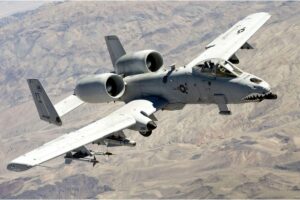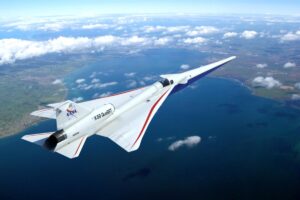Unified Connectivity: Ethernet to 1553 & 429 Converters
Introduction
As aerospace, defense, and industrial systems become increasingly digitized and interconnected, the demand for seamless data exchange between legacy avionics buses and modern network infrastructures intensifies. Two of the most established communication protocols in aviation—MIL-STD-1553 and ARINC 429—continue to serve as the backbone for mission-critical systems. However, with Ethernet emerging as the dominant standard in high-speed data transmission, there arises a need for effective conversion between these disparate protocols. Ethernet to 1553 & ARINC 429 converters enable unified connectivity, ensuring modern Ethernet-based platforms can reliably interface with legacy avionics systems.
This white paper delves into the architecture, functions, use cases, challenges, and future outlook of Ethernet to 1553 and ARINC 429 converters, emphasizing their significance in maintaining system interoperability, reliability, and performance across mixed-protocol environments.
1. The Fundamentals of Ethernet, MIL-STD-1553, and ARINC 429
1.1 Ethernet in Modern Systems
Ethernet is a high-speed, packet-based communication protocol that supports full-duplex communication and scalability. In aerospace applications, Ethernet is increasingly used for real-time data exchange, video streaming, and sensor fusion due to its high bandwidth and flexibility. Unlike traditional avionics buses, Ethernet is not inherently deterministic, requiring careful engineering to ensure time-sensitive operations.
1.2 MIL-STD-1553 Protocol Overview
Established in the 1970s, MIL-STD-1553 is a deterministic, command-response serial data bus protocol that operates at 1 Mbps over a dual-redundant transformer-coupled bus. Widely adopted in military aircraft and spacecraft, it ensures reliable communication with time-critical control systems, leveraging fault tolerance and strict timing control.
1.3 ARINC 429 Protocol Characteristics
ARINC 429 is a simplex data transfer standard used predominantly in commercial aviation. Operating at either 12.5 or 100 kbps, it uses unidirectional transmission with strict data word formatting, including label, SDI, and parity fields. Its simplicity and reliability make it ideal for fixed-function avionics data exchange.
1.4 Protocol Incompatibilities
The primary challenge in interfacing Ethernet with 1553 and ARINC 429 lies in their inherent differences in timing, data framing, and bus control mechanisms. Ethernet is asynchronous and packet-based, while 1553 and ARINC 429 are synchronous, word-oriented systems with strict timing rules.
2. Role and Value of Ethernet to 1553 & 429 Converters
2.1 Bridging Legacy and Modern Networks
Converters serve as gateways between modern Ethernet-based systems and legacy avionics buses, enabling bi-directional data translation and synchronization. This facilitates the integration of new mission computers, C4ISR equipment, or networked sensors with time-proven aircraft subsystems.
2.2 Enhancing System Lifecycle
Using converters allows legacy systems to remain operational and relevant, deferring costly full-system replacements. Modernizing only the interface layer helps maintain platform certifications and leverages existing hardware investments.
2.3 Streamlining Data Translation
These converters intelligently translate Ethernet packets into MIL-STD-1553 and ARINC 429 words and vice versa. This includes encapsulation, timing management, and synchronization to meet protocol-specific constraints.
2.4 Operational Benefits
- Interoperability: Seamlessly connects diverse systems.
- Flexibility: Enables mixed-protocol networks.
- Cost Efficiency: Reduces system upgrade costs.
- Reduced Risk: Minimizes requalification requirements.
3. Converter Architecture and Functional Blocks
3.1 Ethernet Interface Module
This module handles network traffic, supporting standard TCP/IP and UDP/IP stacks. It includes packet parsers, MAC layers, and buffering mechanisms to manage incoming and outgoing Ethernet frames.
3.2 Protocol Conversion Engine
A programmable logic device (FPGA) or microcontroller processes Ethernet data, reformats it into 1553 command-response or ARINC 429 word formats. This engine is the heart of the converter, with real-time operating systems ensuring deterministic behavior.
3.3 1553 and ARINC 429 Interface Logic
Dedicated transceivers and transformers interface with the 1553 bus (for BC, RT, or monitor roles), and line drivers support ARINC 429’s differential signaling. These ensure electrical compliance with each protocol.
3.4 Timing and Synchronization Subsystems
Precise clocking and timestamping modules align asynchronous Ethernet data with synchronous avionics timing requirements. FIFO buffers and priority schedulers are employed to handle latency and jitter.
3.5 Management and Diagnostics Interfaces
Advanced converters include web-based GUIs or command-line interfaces for configuration, monitoring, and diagnostics. Built-in test (BIT) and status indicators help with maintenance and troubleshooting.
4. Use Cases and Integration Scenarios
4.1 Modernizing Military Aircraft
In upgrading avionics systems, converters allow Ethernet-equipped mission computers to communicate with legacy 1553 or ARINC 429 subsystems such as flight control units, navigation systems, and sensors.
4.2 Network-Centric Warfare Systems
Ethernet to MIL-STD-1553 converters enable battlefield networking platforms to connect command and control systems with embedded subsystems that rely on 1553 for critical communications.
4.3 Unmanned Aerial Systems (UAS)
Many UAS architectures include lightweight ARINC 429 or 1553 components for control, while using Ethernet for payload and video systems. Converters bridge this gap for unified data streams.
4.4 Simulation and Training Environments
High-fidelity training simulators replicate legacy avionics behaviors using Ethernet-connected hardware. Converters simulate ARINC 429 or 1553 interfaces to mimic real-world operation.
4.5 Commercial Avionics Test Rigs
Ethernet to ARINC 429 converters are widely used in commercial aircraft test stands to evaluate systems without requiring full installation.
5. Engineering Challenges in Converter Development
5.1 Determinism and Timing
One of the most significant technical hurdles is aligning the non-deterministic nature of Ethernet with the rigid timing requirements of 1553 and ARINC 429. Designers must implement precise scheduling algorithms to ensure valid data sequencing.
5.2 Bandwidth and Latency Management
Translating high-speed Ethernet packets into low-bandwidth serial words introduces latency. Intelligent buffering, prioritization, and flow control are essential to avoid bottlenecks and data loss.
5.3 Error Detection and Recovery
Ethernet includes CRC checks and ARQ strategies, while 1553 and ARINC 429 use parity and word-level integrity checks. Converters must support cross-layer error mapping and handling mechanisms.
5.4 Power and Environmental Constraints
Deployable converters must withstand harsh conditions, including high vibration, extreme temperatures, and EMI. Power efficiency is also critical, especially in UAV and satellite applications.
5.5 Protocol Compliance and Certification
Converters must comply with MIL-STD-1553B, ARINC 429 specifications, and other standards like DO-160, DO-254, and DO-178C. Certification ensures airworthiness and mission readiness.
6. Advanced Features in Next-Generation Converters
6.1 Multi-Protocol Support
Modern converters may support multiple avionics standards simultaneously, acting as universal data bridges between Ethernet, 1553, ARINC 429, and even CAN, SPI, or serial buses.
6.2 Time-Aware Shaping and TSN Support
Some Ethernet-to-avionics converters integrate Time-Sensitive Networking (TSN) capabilities, improving determinism for mission-critical applications.
6.3 Built-In Test (BIT) and Logging
Integrated diagnostic tools and data logging functions support fault detection, compliance auditing, and predictive maintenance.
6.4 Cybersecurity and Encryption
To address increasing cyber threats, converters may include secure boot, hardware encryption, authentication protocols, and secure firmware update capabilities.
6.5 Configurable Firmware and APIs
APIs and scriptable firmware allow dynamic configuration of data routing, filter settings, and conversion rules, giving engineers more control over operation.
7. Implementation Considerations and Best Practices
7.1 System Requirements Analysis
Understanding system architecture, data rates, timing constraints, and environmental conditions is key to selecting and configuring the right converter.
7.2 Integration Planning
Plan converter placement, bus topologies, and network load balancing early in the design phase. This helps avoid conflicts and ensures compatibility.
7.3 Verification and Validation Testing
Comprehensive lab testing with real-world traffic scenarios validates performance, reliability, and compliance.
7.4 Documentation and Support
Select vendors that provide detailed documentation, long-term support, and lifecycle guarantees for aerospace or military-grade applications.
7.5 Firmware Update Strategies
Enable secure, field-upgradeable firmware mechanisms to allow future enhancements and cybersecurity updates without requiring hardware changes.
8. Future Outlook for Unified Protocol Conversion
8.1 Increasing Ethernet Adoption in Avionics
The growing bandwidth and protocol support in Ethernet is driving its adoption as a backbone for new-generation aircraft. As a result, the demand for Ethernet converters will continue to rise.
8.2 Modular Avionics Architectures
With the shift toward open systems like FACE (Future Airborne Capability Environment), modular plug-and-play converter modules will be central to avionics integration.
8.3 AI-Augmented Data Routing
Artificial intelligence may enhance data routing and error prediction within converters, improving reliability and adaptive behavior under load.
8.4 Quantum-Resistant Security Layers
Emerging standards in quantum-safe encryption could find their way into mission-critical converters to future-proof communications.
8.5 Eco-Friendly Designs
Environmental concerns will push for converters with lower power footprints, recyclable materials, and smart power management features.
9. Conclusion
Ethernet to MIL-STD-1553 and ARINC 429 converters are indispensable tools for bridging legacy avionics with modern digital systems. These converters not only extend the operational life of existing hardware but also unlock new capabilities in mission planning, system diagnostics, and network-centric warfare. As the aerospace industry continues to evolve toward higher speeds, greater integration, and enhanced security, unified connectivity solutions will remain at the heart of reliable data exchange across protocol boundaries.
Organizations that embrace this hybrid integration model position themselves to innovate faster, reduce costs, and maintain compatibility with both legacy and next-generation technologies.





